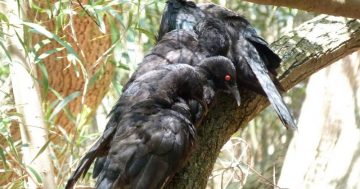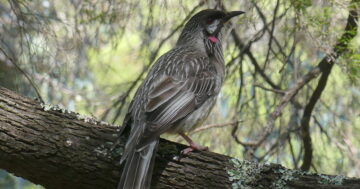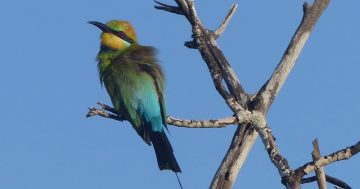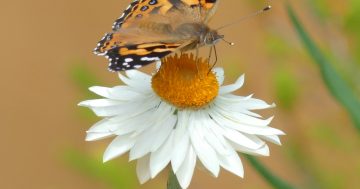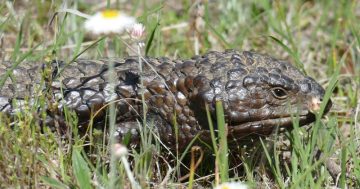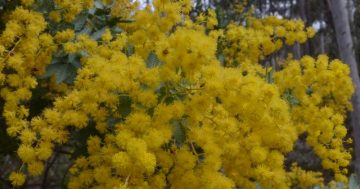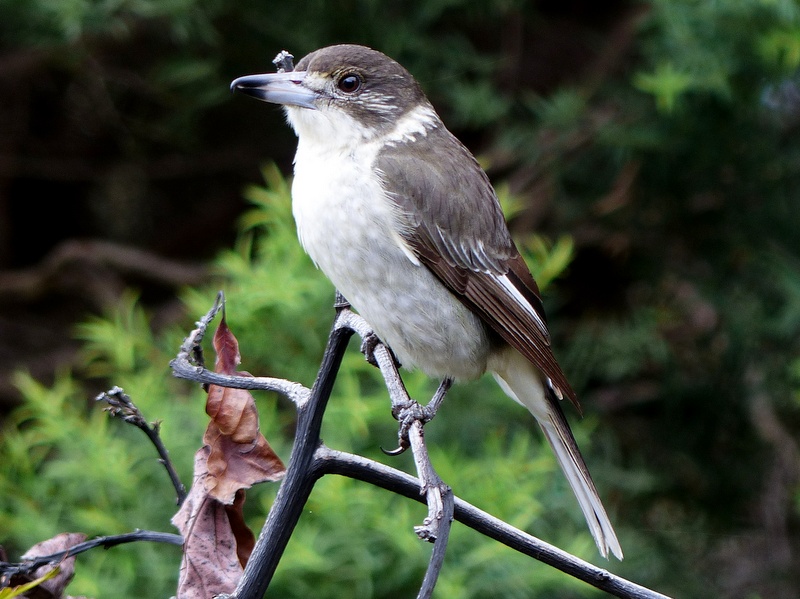
Young Grey Butcherbird in the author’s backyard. Photo: Ian Fraser.
For much of my life I’ve been a little surprised and disappointed that butcherbirds were scarce in suburbia.
Living 27 years in a home with a large yard and lots of native trees and shrubs, I only recorded one, and that was a very memorable occasion indeed!
I was looking out my study window to a hanging bird bath (an old saucepan, in fact), where an unexpected flock of White-naped Honeyeaters was enthusiastically bathing. It was early August and I’d not expected them back from migration for another month or so yet.
But as I watched, a young Grey Butcherbird swooped in, grabbed one of the bathers, quickly drowned it and flew off with it, with the surviving honeyeaters streaming furiously after it. I’m sure I was left open-mouthed at this scene from an Attenborough series happening right in front of me. I never saw either of those species in my yard again.
But things have changed in recent years and since 2017, they’ve been in my garden every year, often singing in the park over the back fence and several times right here in our yard.
That seems to have coincided with a more general increase in Grey Butcherbird numbers, the reason for which isn’t at all obvious – though perhaps the better question is the reason for their previous scarcity, as they are common enough in other southern cities.
One suggestion has been the relative shortage of small lizards in our cooler climate across the south east, though I’m not sure how real that shortage was either and certainly lizard numbers have risen in recent years.
Perhaps, as things have warmed up, the skinks have found things more to their liking? It’s all just guesswork, of course, but it’s good mind exercise.
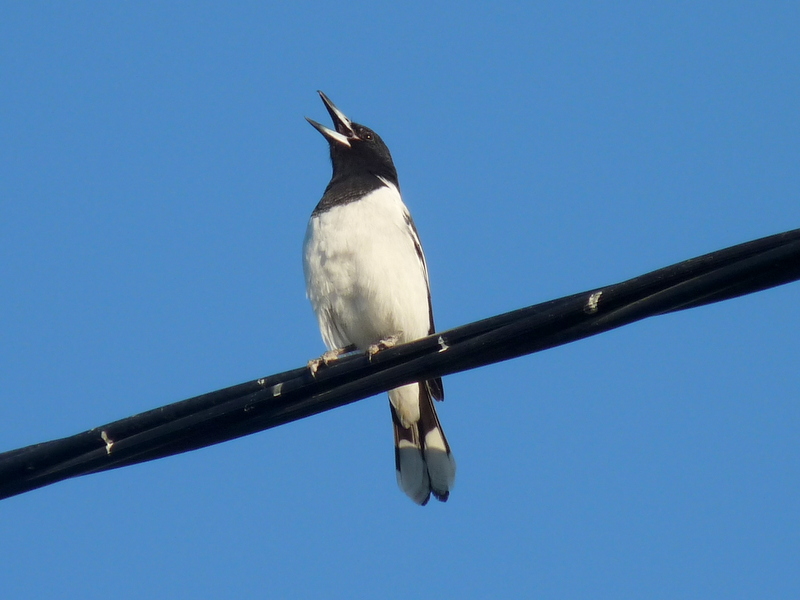
The Pied Butcherbird’s song is my favourite of all bird songs. Its black throat and back distinguish it from its Grey relation. Photo: Ian Fraser.
Whatever the reason, Grey Butcherbirds are now part of the local landscape, including its soundscape with their beautiful, strong fluting call.
Several times, I’ve been asked about ‘the grey bird that looks like a kingfisher’, which is actually a pretty good description.
Like kingfishers, they sit upright, watching for prey. Their short neck, large head, and heavy straight bill with a wickedly hooked tip produce a very distinctive silhouette. Their closest relatives, however, are magpies and currawongs.
Of course, the name ‘butcherbird’ requires some explanation. It (in the form ‘butcher-bird’) was in use in the Sydney colony by 1810 but did not arise here.
By then, it had been used in England for at least 200 years for shrikes, a northern family of carnivorous birds with bills very similar to those of our butcherbirds. The term apparently referred to their habit of storing prey on thorns or in branch forks, which is exactly what our butcherbirds do. They feed on larger insects, small lizards and birds, as already noted above.
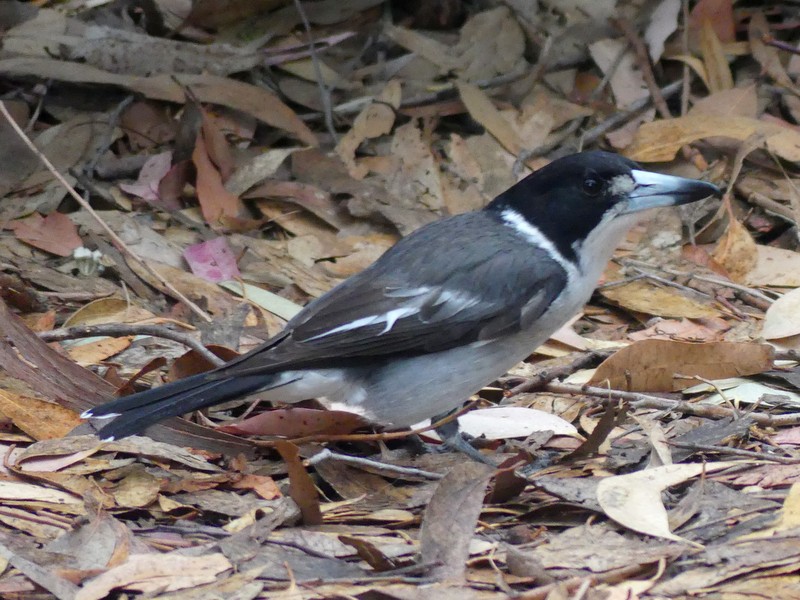
Grey Butcherbirds often pounce on prey such as lizards or insects on the ground. Photo: Ian Fraser
Fortunately, I’m not aware of Grey Butcherbird attacks on humans in the nesting season being a particular problem in Canberra (though I’d be surprised if it hasn’t happened), unlike their magpie relations, and it’s just as well as that hooked bill would be a nasty weapon.
However, I have a friend in Port Macquarie who’s regularly assaulted by his local park butcherbird in spring, and I understand that it can be a fairly serious problem in Brisbane.
They build a stick nest, like that of a magpie, but smaller. Unlike magpies, which breed as a family group, Grey Butcherbirds form a simple pair. They are found across most of Australia, south of the tropics, other than in the central deserts.
The Pied Butcherbird rules the airwaves across almost the whole country, except the south-east. I love the call of the Grey, but the Pied Butcherbird’s call is my absolute favourite bird call anywhere – it’s a full performance of richly pure fluting and warbling.
The performer rises up with beak aloft for the higher notes and stoops for the low register. It’s the song of the inland for me. In recent years, some Pied Butcherbird breeding territories have been established in the ACT, though not in suburbia. It will be interesting to see if this is the beginning of a general influx.
I love the butcherbirds, and I hope they’re favouring your part of the world, too.
Ian Fraser is a naturalist, conservationist and author. He has written on all aspects of natural history, advised the ACT Government on biodiversity and published multiple guides to the region’s flora and fauna.
Original Article published by Ian Fraser on Riotact.









